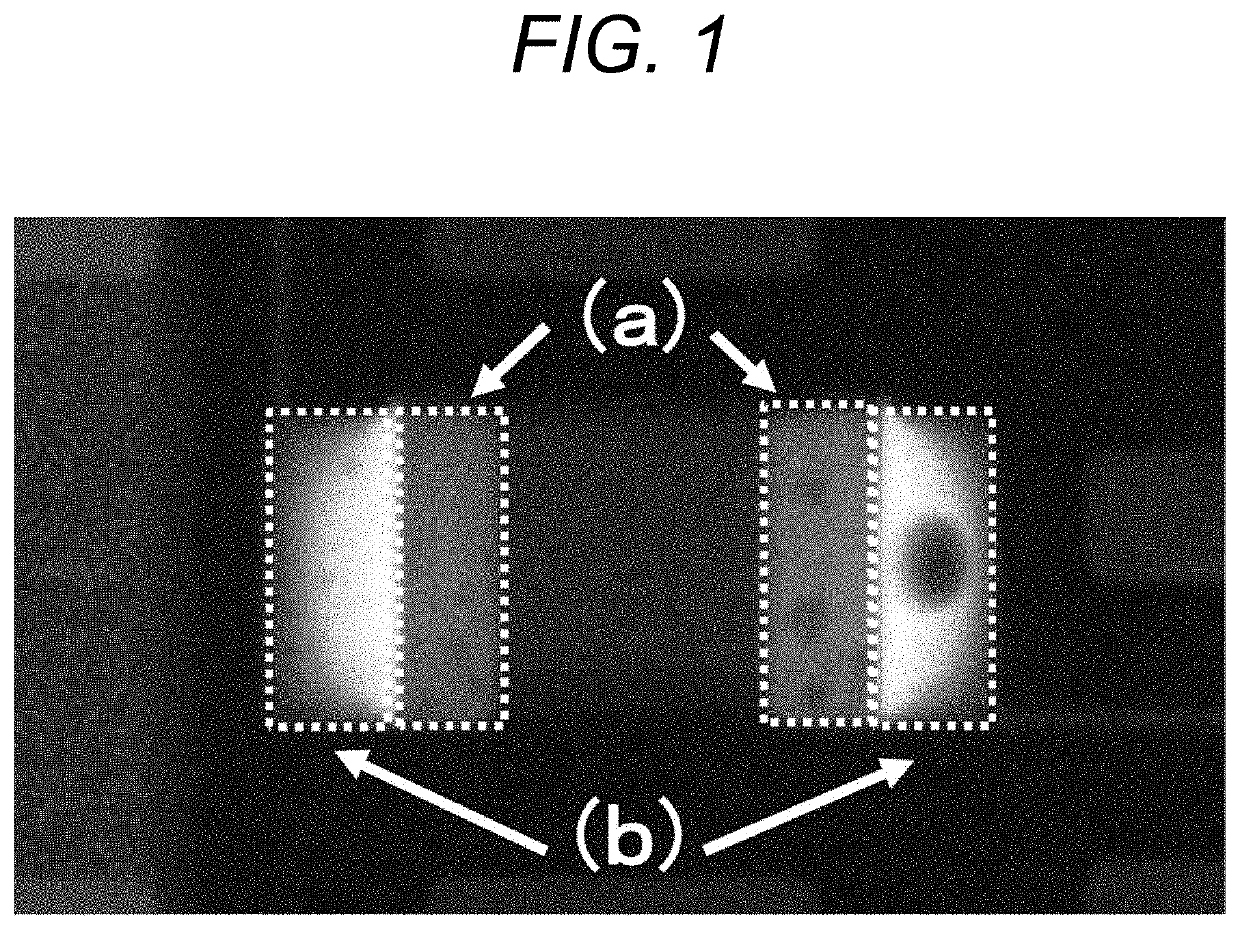Lead-free solder alloy, solder joining material, electronic circuit mounting substrate, and electronic control device
a technology of electronic control device and soldering alloy, which is applied in the direction of soldering apparatus, semiconductor/solid-state device details, manufacturing tools, etc., can solve the problems of lead-free solder alloy being a little poorer in solderability than lead-comprising solder alloy, circuit mounting substrate used for electronic control device that controls an engine may be exposed to a very severe environment, and on-vehicle electronic circuit mounting substrate being exposed to severe temperature variations
- Summary
- Abstract
- Description
- Claims
- Application Information
AI Technical Summary
Benefits of technology
Problems solved by technology
Method used
Image
Examples
examples
[0110]Hereinafter, the present invention will be described in detail with Examples and Comparative Examples. Note that the present invention is not limited to these Examples.
Preparation of Flux
[0111]The following components were kneaded to obtain a flux for Examples and Comparative Examples.
[0112]Hydrogenated acid-modified rosin (product name: KE-604; manufactured by Arakawa Chemical Industries, Ltd.): 49.0% by mass
[0113]Glutaric acid: 0.3% by mass
[0114]Suberic acid: 2.0% by mass
[0115]Malonic acid: 0.5% by mass
[0116]Dodecanedioic acid: 2.0% by mass
[0117]Dibromobutenediol: 2.0% by mass
[0118]Fatty acid amide (product name: Slipax ZHH; manufactured by Nihon Kasei CO., LTD): 6.0% by mass
[0119]Diethylene glycol monohexyl ether: 35.2% by mass
[0120]Hindered phenol-based antioxidant (product name: Irganox 245; manufactured by BASF JAPAN K.K.): 3.0% by mass
[0121]Preparation of Solder Paste
[0122]11.3% by mass of the flux and 88.7% by mass of powder of the lead-free solder alloys (powder parti...
PUM
| Property | Measurement | Unit |
|---|---|---|
| temperature | aaaaa | aaaaa |
| temperature | aaaaa | aaaaa |
| temperature | aaaaa | aaaaa |
Abstract
Description
Claims
Application Information
 Login to View More
Login to View More - R&D
- Intellectual Property
- Life Sciences
- Materials
- Tech Scout
- Unparalleled Data Quality
- Higher Quality Content
- 60% Fewer Hallucinations
Browse by: Latest US Patents, China's latest patents, Technical Efficacy Thesaurus, Application Domain, Technology Topic, Popular Technical Reports.
© 2025 PatSnap. All rights reserved.Legal|Privacy policy|Modern Slavery Act Transparency Statement|Sitemap|About US| Contact US: help@patsnap.com

